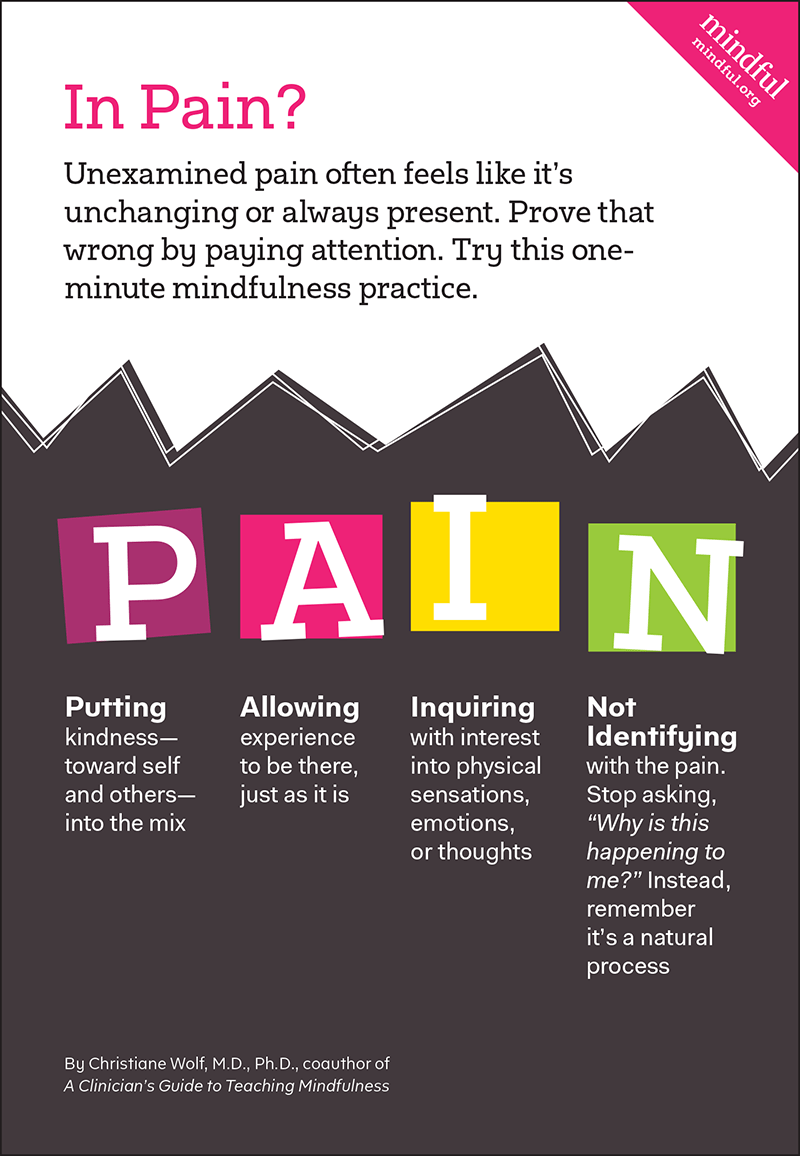
Chronic pain affects more people in the US than diabetes, heart disease, and cancer combined: more than 100 million adults. More than half of them feel they have little or no control over the pain. It often negatively affects concentration, energy level, sleep, and overall quality of life. More than 80% report feeling depressed because of the pain. And let’s not even mention related health-care costs and overall costs for society including number of sick days, prescription drug abuse, and other forms of self medication— a syndrome that is well-depicted in the recent Jennifer Aniston movie Cake.
When it comes to chronic pain, the key is learning to live with it rather than vainly trying to avoid or eradicate it. And mindfulness practice is a wonderful opportunity to do just that. It helps to shift the locus of control from the outside (“this is happening to me and there is nothing I can do about it”) to the inside (“this is happening to me but I can choose how I relate to it”). We can learn to attend to our experience in a kind, curious manner instead of fighting or denying it. We learn to cope with the pain in new ways. Some studies on pain suggest that the greatest benefit from learning mindfulness meditation is the coping. For example, studies show that the reported quality of life goes up while the “objective” pain ratings don’t change much.
A regular meditation practice (which can include short and long sessions and everything in between) is the best ongoing foundation for working with pain. It helps us to hone the skills we need to attend to pain—or any challenging experience we encounter for that matter.
Read the full story in the April 2015 issue of Mindful magazine.






